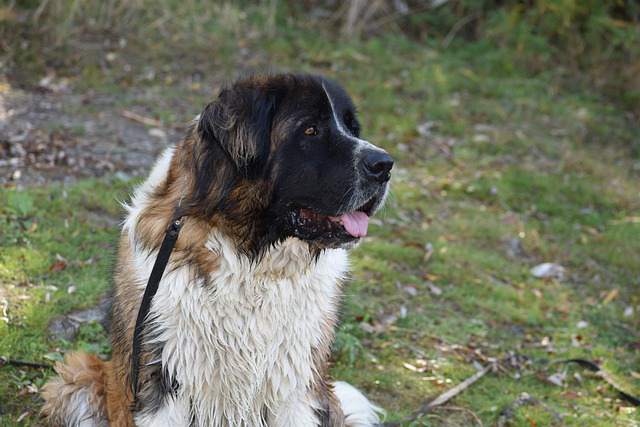Managing and Addressing Predatory Aggression in Dogs

Today, we’re diving into a fascinating yet often misunderstood topic: predatory aggression in dogs.
Join me as we unravel the instinctive behaviors that drive our furry friends, and discover how we can navigate this aspect of their nature with love and understanding.
Let’s get started…
What is Predatory Aggression in Dogs?
Predatory aggression in dogs refers to their natural instinctual behavior to chase, capture, and potentially harm prey animals.
It’s important to understand this behavior to ensure the safety of both your dog and other animals.
Factors that Trigger Predatory Aggression in Dogs
Predatory aggression in dogs is a natural instinct that stems from their ancestral hunting behavior. It is important to understand the factors that can trigger predatory aggression in dogs to prevent potential harm to other animals or humans.
Here are some factors that can contribute to triggering predatory aggression in dogs:
1. Prey Drive: Dogs have an innate prey drive, which is a strong instinct to chase and capture prey. This drive is influenced by genetics and can vary among different breeds and individual dogs. Dogs with a high prey drive are more likely to exhibit predatory aggression.
2. Movement and Sound: Sudden movements or high-pitched sounds can trigger a dog’s prey drive and initiate predatory behavior. Fast-moving objects, such as bicycles, joggers, or small animals, can stimulate a dog’s instinct to chase and potentially attack.
3. Lack of Socialization: Dogs that have not been properly socialized may have a heightened prey drive and may be more prone to displaying predatory aggression. Socialization helps dogs learn appropriate behavior and reduces the likelihood of aggressive responses.
4. Lack of Training and Control: Dogs that have not received proper training and lack control may be more likely to exhibit predatory aggression. Training helps dogs understand boundaries and teaches them to respond to commands, which can help prevent aggressive behavior.
5. Lack of Mental and Physical Stimulation: Dogs that are bored or under-stimulated may redirect their energy towards predatory behavior. Providing adequate mental and physical stimulation through activities, exercise, and interactive toys can help reduce the likelihood of predatory aggression.
6. Protective Instincts: Some dogs may exhibit predatory aggression as a means of protecting their territory, resources, or family members. This can be triggered by perceived threats or intrusions into their space.
7. Fear and Anxiety: In some cases, fear and anxiety can contribute to predatory aggression. Dogs may display aggressive behavior as a defensive response when they feel threatened or cornered.
8. Breed Predisposition: Certain dog breeds have a higher predisposition to predatory aggression due to their genetic makeup and historical roles as hunting or working dogs. It is important to understand breed-specific traits and tendencies when dealing with predatory aggression.
Read more about factors that lead to dog aggression.
Identifying Predatory Aggression in Dogs
Predatory aggression in dogs refers to aggressive behavior that is motivated by the dog’s natural instinct to hunt and capture prey.
It is important to identify predatory aggression in dogs to ensure the safety of both humans and other animals.
Here are some ways to identify predatory aggression in dogs:
1. Chasing behavior: Dogs with predatory aggression may exhibit intense chasing behavior towards small animals, such as squirrels, rabbits, or birds. They may fixate on the target and show a strong desire to pursue and capture it.
2. Stalking behavior: Dogs displaying predatory aggression may exhibit stalking behavior, where they crouch low to the ground, move slowly and quietly, and focus their attention on a potential prey target.
3. Pouncing behavior: Dogs with predatory aggression may exhibit pouncing behavior, where they leap forward suddenly and aggressively towards their target, attempting to capture it.
4. Lack of fear or anxiety: Unlike other forms of aggression that may be fear or anxiety-based, predatory aggression is not driven by fear or anxiety. Dogs displaying predatory aggression may show a lack of fear or anxiety when engaging in aggressive behavior towards prey.
5. Intense focus and fixation: Dogs with predatory aggression may display intense focus and fixation on their target. They may ignore distractions and become completely absorbed in their pursuit of prey.
6. Lack of warning signs: Predatory aggression in dogs may occur without warning signs or signals. Unlike other forms of aggression that may involve warning displays like growling or snarling, predatory aggression can happen suddenly and without apparent provocation.
7. Fixation on small, fast-moving objects: Dogs with predatory aggression may have a particular fixation on small, fast-moving objects, such as squirrels, rabbits, or birds.
8. Persistence: Dogs with predatory aggression may exhibit persistent behavior in their pursuit of prey. They may continue to chase, stalk, and attempt to capture the target even if it tries to escape or hide.
It is important to note that predatory aggression is relatively rare in dogs and is more commonly seen in certain breeds or hunting dogs.
Read more about identifying dog aggression.
Managing and Addressing Predatory Aggression in Dogs
The following are some common ways of managing and addressing predatory aggression in dogs:
1. Understanding Predatory Aggression
To effectively manage predatory aggression in dogs, it is crucial to have a clear understanding of what it entails. Predatory aggression is a natural instinct in dogs that drives them to chase, capture, and potentially harm prey animals.
It is important to recognize the signs and triggers of predatory aggression in order to implement appropriate management strategies.
2. Early Socialization and Training
Proper socialization and training from an early age can play a significant role in managing predatory aggression in dogs. Exposing puppies to a variety of people, animals, and environments can help them develop appropriate social skills and reduce the likelihood of aggressive behavior later in life.
Basic obedience training can also provide dogs with the necessary skills to respond to commands and redirect their focus away from predatory behavior.
3. Environmental Management
Creating a safe and controlled environment is essential for managing predatory aggression in dogs. This may involve securely fencing the yard to prevent escape and potential encounters with prey animals.
Additionally, keeping dogs on a leash during walks and avoiding areas with high prey populations can help minimize opportunities for predatory behavior.
4. Distraction and Diversion Techniques
When a dog exhibits signs of predatory aggression, it is important to redirect their attention to more appropriate activities. Providing engaging toys, puzzles, or interactive games can help redirect their focus and channel their energy in a positive way.
Engaging in structured play sessions with the owner can also help build a bond and reinforce desired behaviors.
5. Positive Reinforcement Training
Positive reinforcement training techniques can be highly effective in managing predatory aggression. Rewarding desired behaviors, such as calmness and appropriate responses to stimuli, can help reinforce those behaviors and discourage aggressive tendencies.
Consistency and patience are key when using positive reinforcement training methods.
6. Behavior Modification
In some cases, behavior modification techniques may be necessary to manage predatory aggression in dogs. This may involve working with a professional dog trainer or behaviorist who can develop a customized behavior modification plan.
Techniques such as desensitization and counterconditioning can help change the dog’s emotional response to triggers that elicit predatory aggression.
7. Environmental Enrichment
Providing mental and physical stimulation through interactive toys, puzzle feeders, and regular exercise can help redirect your dog’s energy and reduce the likelihood of predatory behavior.
Additionally, managing your dog’s environment by removing access to potential prey or using deterrents can be helpful.
8. Medication
In some cases, medication may be recommended by a veterinarian or veterinary behaviorist to help manage underlying anxiety or arousal levels that contribute to predatory aggression.
Medication should always be used in conjunction with behavior modification techniques and under the guidance of a professional.
9. Consultation with a Professional
If a dog’s predatory aggression is severe or persistent, it is important to seek guidance from a professional who specializes in dog behavior. They can assess the situation, provide expert advice, and develop a comprehensive management plan tailored to the specific needs of the dog.
Professional guidance can be invaluable in effectively managing predatory aggression and ensuring the safety of both the dog and those around them.
Remember, managing predatory aggression in dogs requires patience, consistency, and professional guidance. It is important to prioritize safety and take appropriate measures to prevent potential harm to humans and other animals.
Read more about addressing dog aggression.
Preventing Predatory Aggression in Dogs
Preventing predatory aggression in dogs is crucial for the safety of both humans and other animals. One effective strategy is early socialization, exposing puppies to a variety of people, animals, and environments.
Providing appropriate mental and physical stimulation through interactive toys and regular exercise can also help prevent predatory behaviors.
Consistent and positive reinforcement training methods, focusing on commands like “leave it” and “drop it,” can redirect a dog’s prey drive.
Lastly, responsible pet ownership includes securely containing dogs, using leashes during walks, and supervising interactions with small animals or children to prevent potential predatory incidents.
Read more about how to prevent dog aggression.
Frequently Asked Questions
How can I identify predatory aggression in my dog?
Signs of predatory aggression in dogs include intense focus on a target, a low body posture, stalking movements, and rapid chasing. Some dogs may also exhibit a high-pitched prey-drive vocalization.
Can predatory aggression be prevented or managed?
While predatory aggression is instinctual, it can be managed through proper training, socialization, and supervision. Working with a professional dog trainer or behaviorist can help address this behavior and teach your dog alternative behaviors.
Are certain dog breeds more prone to predatory aggression?
Some dog breeds have a higher prey drive than others, but it’s important to remember that individual dogs vary in their behavior. Breeds like Greyhounds, Terriers, and Sight Hounds may have a stronger instinctual prey drive, but proper training and management can help control it.
Can predatory aggression be redirected?
Yes, redirecting predatory aggression is possible. Providing appropriate outlets for your dog’s prey drive, such as engaging in structured play or using interactive toys, can help redirect their energy and focus away from potential prey.
What should I do if my dog displays predatory aggression towards other animals?
If your dog exhibits predatory aggression towards other animals, it’s crucial to prioritize safety. Keep your dog on a leash, avoid off-leash areas, and consider using a muzzle for added precaution. Seeking professional help is highly recommended to address this behavior effectively.
Read more about other types of dog aggression.
Conclusion
In conclusion, understanding predatory aggression in dogs is crucial for responsible pet owners.
By recognizing the signs and taking proactive measures, we can create a safe environment for both our furry friends and those around them.
Remember, education and responsible ownership are the keys to fostering a harmonious relationship with our beloved canine companions.

![Can Beagles Swim [Helpful Tips] Can Beagles Swim](https://petcreeks.com/wp-content/uploads/2023/05/Can-Beagles-Swim-768x555.jpg)

![How to Stop Aggression in Dogs [12 Strategies] Stop Aggression in Dogs](https://petcreeks.com/wp-content/uploads/2023/10/guard-dog-3494494_640.jpg)

![How To Discipline a Beagle [10 Insights] How To Discipline a Beagle](https://petcreeks.com/wp-content/uploads/2023/05/How-To-Discipline-a-Beagle-768x555.jpg)
![Dog Possessive Of Toys With Other Dogs [Explained] Dog Possessive Of Toys With Other Dogs](https://petcreeks.com/wp-content/uploads/2023/02/Dog-Possessive-Of-Toys-With-Other-Dogs-768x555.jpg)